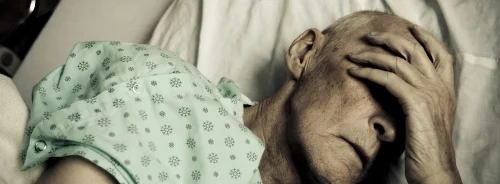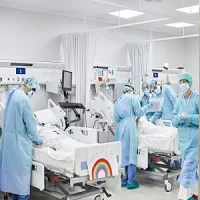The coronavirus has a high incidence of patients with severe acute respiratory syndrome (SARS). Many patients infected with COVID-19 need to be admitted to the ICU for invasive ventilation. They are also at a high risk of developing secondary, ventilator-associated pneumonia (VAP). This is because of breach of natural defences by invasive devices, impairment of coughing and mucociliary clearance, sedation and the immunoparetic effects of illness.
Ventilator-associated pneumonia is one of the most common ICU-acquired infections. It can be quite challenging to diagnose because several non-infectious diseases mimic the clinical picture of radiographic infiltrates, inflammation and impaired oxygenation that typifies VAP. Reports of VAP among ventilated COVID-19 patients vary between 40-86%. Rates are likely to vary depending on the clinical characteristics of patients, ICU admission policies and clinical factors such as the use of immunosuppressive therapies.
A study was conducted to evaluate the incidence of VAP and bacterial lung microbiome composition of ventilated COVID-19 and non-COVID-19 patients. Researchers performed microbiological culture on all lower respiratory tract samples and also analysed bronchoalveolar lavage. The study included 81 COVID-19 and 144 non-COVID-19 patients who received invasive ventilation.
Findings showed that COVID-19 patients were more likely to develop VAP compared to patients without COVID-19. The distribution of organisms causing VAP and the pulmonary microbiome was similar between the two groups, but three cases of invasive aspergillosis were identified among COVID-19 patients. This did not occur in the non-COVID-19 group. In addition, herpesvirade activation was also more frequent among COVID-19 patients.
COVID-19 patients were more likely to develop VAP compared to patients without COVID-19
The researchers note that the increased risk of developing VAP in COVID-19 patients was not a function of longer duration of ventilation. Therefore, it is not certain why ventilated COVID-19 patients have such an increased risk of infection. However, previous research suggests that the strongest predictor of nosocomial infection in critically ill patients is impaired immune cell function. COVID-19 patients experience a complex dysregulation of immune function with hyperinflammatory activation, organ damage and impaired antimicrobial functions. There are also reports of increases in markers of immune cell functional suppression in the most severely unwell patients. Also, COVID-19 patients are more likely to present with ARDS, which is an established risk factor for VAP.
Overall, study findings show that COVID-19 is associated with an increased risk of VAP, but this is not completely explained by the prolonged duration of ventilation. The pulmonary dysbiosis and the causative organisms of secondary pneumonia are similar to that seen in patients ventilated for other reasons.
Source: Critical Care
Image Credit: iStock










